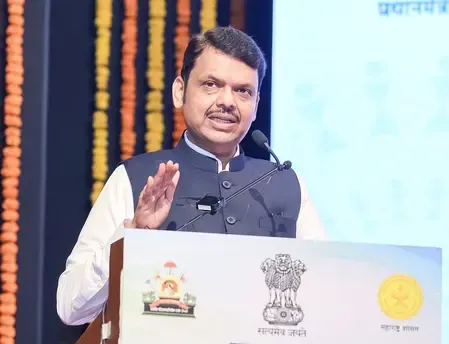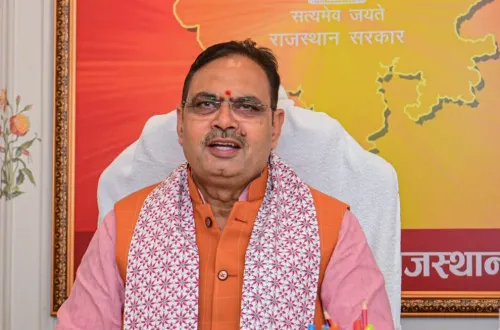What Are the Key Features of the Maharashtra Gems and Jewellery Policy 2025?

Synopsis
Key Takeaways
- Investment Target: Rs 1 lakh crore.
- Job Creation: Five lakh new jobs.
- Export Goal: Increase exports to $30 billion.
- Implementation Period: 2025 to 2030.
- Wastewater Policy: Promotes circular economy.
Mumbai, October 7 (NationPress) The Maharashtra Cabinet, led by Chief Minister Devendra Fadnavis, has officially sanctioned the Gems and Jewellery Policy 2025. This initiative is designed to attract investments totaling Rs 1 lakh crore and generate five lakh new jobs.
The primary goal of this policy is to boost exports from the gems and jewellery sector from $15 billion to $30 billion.
Additionally, the Cabinet has approved the Wastewater Treatment and Recycling Policy, which will be implemented across 424 urban local bodies in the state.
The Maharashtra Gems and Jewellery Policy will be active from 2025 to 2030.
A budget of Rs 1,651 crore has been allocated as an incentive for the policy's implementation.
For the upcoming two decades, from 2031 to 2050, a total budget of Rs 13,835 crore has been approved.
Furthermore, a financial allocation of Rs 100 crore is available for the implementation of the policy during the fiscal year 2025-26, according to government statements.
The aim of the Gems and Jewellery Policy is to position Maharashtra as a global hub for the gems and jewellery industry by leveraging advanced technology. Built on a well-structured policy framework, the initiative seeks to enhance the sector through infrastructure improvements, innovation, and skill development, thereby establishing Maharashtra as a global leader in gems and jewellery production and exports. This will be achieved through the promotion of industrial clusters, research and development, and the integration of digital trade solutions.
The government has stated that industry units under this policy will receive various financial and other benefits, including interest subsidies, investment incentives, stamp duty concessions, electricity tariff reductions, cluster development, and skill development assistance. Additional support will include provisions for exports, branding, designing, packaging, and marketing, as well as one-window schemes, plug-and-play facilities, reliable power and water supply, and enhanced floor space index.
The rapid growth of the gems and jewellery sector presents significant opportunities in trade, design, technology, and value-added exports in Maharashtra. The necessity for this policy arises from the urgent need to develop infrastructure and skills in response to advancements in lab-grown diamonds, digital platforms, blockchain traceability, and technology.
In addition, the Wastewater Treatment and Recycling Policy aims to foster a circular economy by processing and recycling wastewater in urban regions throughout the state.
The Urban Development Department will coordinate the execution of this policy, for which a budget of Rs 500 crore has been approved.
With 424 urban local bodies in Maharashtra and nearly 48 percent of the state's population residing in urban areas, the demand for water is rapidly rising. However, a minimal amount of the wastewater generated is currently being processed and reused. Sustainable management of wastewater and the reuse of treated water are vital strategies for addressing the increasing water demand. The emphasis will be on promoting the reuse of treated wastewater, along with institutional development considering the social and economic advantages of these initiatives. Various mechanisms will be established to encourage water processing and reuse.
The policy will be applicable to all urban local bodies, large-scale water users, enforcement agencies, and the general public.
The principal goal of this policy is to promote the use of treated wastewater for non-potable applications and to encourage a circular economy for water.
The priority for using treated water will be directed towards thermal power plants, industrial applications, urban usage, and agricultural irrigation. A District Joint Control Committee will be formed, chaired by the respective District Collector or Municipal Commissioner. At the state level, a State Level High Steering Committee will also be established under the leadership of the Chief Secretary.









